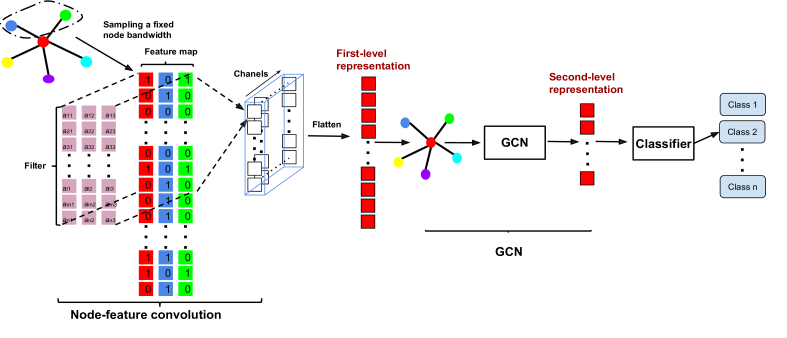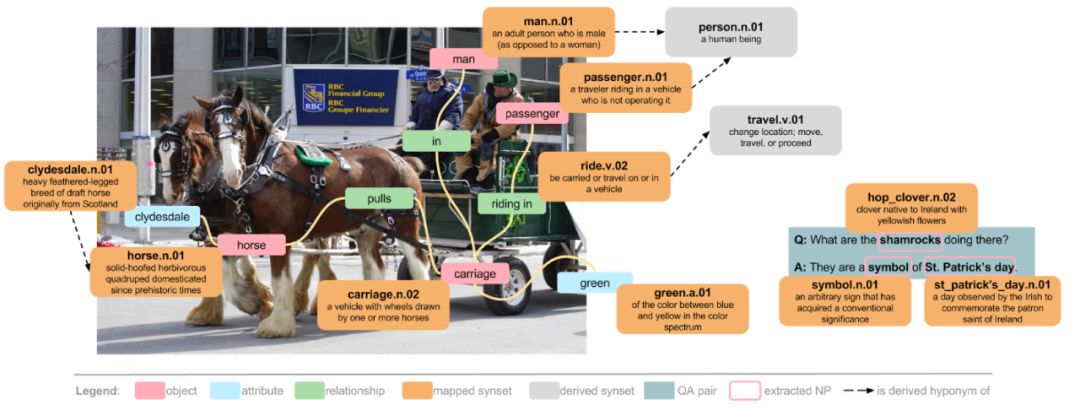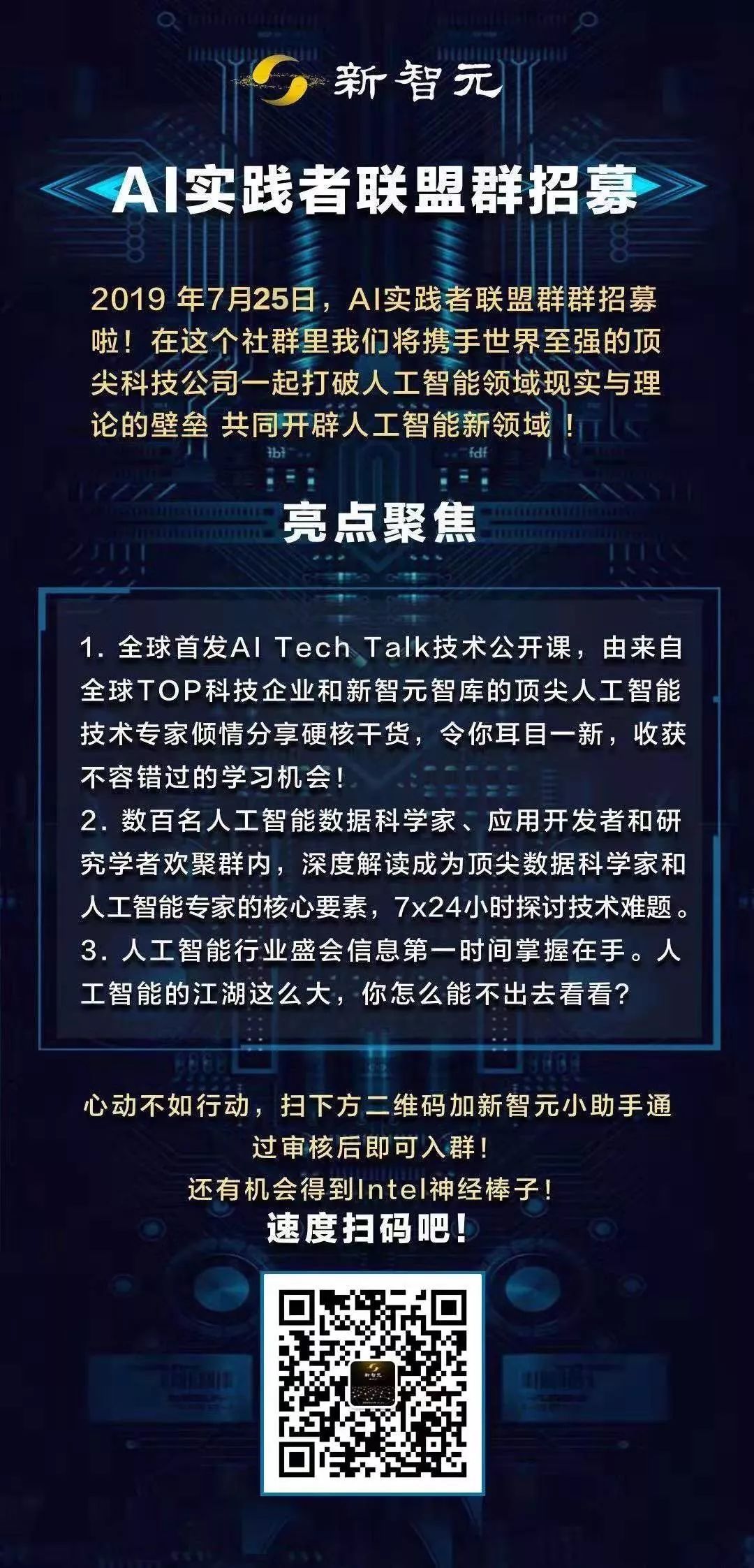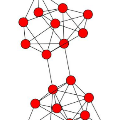NeurIPS图表示学习研讨会录取论文揭晓:92篇论文看懂图表示学习
AI WORLD 2019 世界人工智能峰会精彩重放!
10 月 18 日,2019 中关村论坛平行论坛 ——AI WORLD 2019 世界人工智能峰会在北京启幕。新智元杨静、科大讯飞胡郁、微软王永东、华为王成录、英特尔宋继强、旷视及智源学者孙剑、滴滴叶杰平、AWS 张峥、依图颜水成、地平线黄畅、autowise.ai 黄超等重磅嘉宾中关村论剑,重启充满创新活力的 AI 未来。峰会现场,新智元揭晓 AI Era 创新大奖,并重磅发布 AI 开放创新平台和献礼新书《智周万物:人工智能改变中国》。回放链接:
新智元报道
【新智元导读】NeurIPS图表示学习研讨会录取论文揭晓,共有92篇论文入选。近年来,图表示学习的研究激增,包括用于深图嵌入的技术,卷积神经网络对图结构数据的泛化以及受信念传播启发的神经信息传递方法。图可以看作是对更简单类型的结构化数据(例如图像)的自然概括,因此,它们代表了机器学习的下一个突破口。欢迎来新智元 AI 朋友圈与大咖一起讨论~
从电信网络到量子化学,图形结构化数据在自然科学和社会科学中无处不在。如果我们希望系统可以从此类数据中进行学习,推理和生成,则在深度学习体系结构中建立关系归纳偏差至关重要。
此外,图可以看作是对更简单类型的结构化数据(例如图像)的自然概括,因此,它们代表了机器学习的下一个突破口。

近年来,图表示学习的研究激增,包括用于深图嵌入的技术,卷积神经网络对图结构数据的泛化以及受信念传播启发的神经信息传递方法。
图神经网络和相关技术的这些进步导致了许多领域的最新技术成果,包括化学合成,3D视觉,推荐系统,问题解答和社交网络分析。对此领域日益普及的最大证明也许是最近关于该主题的四篇受欢迎的评论论文发表,每篇论文都试图统一各个领域相似思想的不同表述。
这表明该主题已达到临界水平,需要召开专门的研讨会,召集研究人员共同确定有意义的感兴趣领域,讨论我们如何设计新的更好的基准,鼓励讨论并促进协作。

来自谷歌、Twitter、MIT、斯坦福等公司和高校的9位科学家共同组织了NeurIPS 2019 Workshop。
该Workshop将包括有关该领域各种方法和问题的演讲,海报和邀请演讲,包括但不限于:
在图上进行监督式深度学习(例如图神经网络)
互动和关系网络
无监督图嵌入方法
图的深层生成模型
用于化学/药物设计的深度学习
在manifolds,点云和计算机视觉上进行深度学习
关系归纳偏差(例如,用于强化学习)
基准数据集和评估方法
组织者欢迎原创研究论文,这些论文以前从未在机器学习会议或研讨会上发表过。所有被接受的论文均将以poster的形式展示,并选择三篇贡献作品进行口头演示。
除了传统的研究论文提交之外,我们还将欢迎以一页纸的形式提交的论文,描述图形表示学习领域的开放性问题和挑战。这些未解决的问题将在茶歇之前立即进行简短演讲(5-10分钟),以促进讨论。
该研讨会的主要目标是促进社区建设。随着数百名新的研究人员开始在该领域开展项目,我们希望将他们聚集在一起,以将这个快速增长的图形表示学习领域整合为一个健康而充满活力的子领域。
原创研究
Pre-training Graph Neural Networks. Weihua Hu, Bowen Liu, Joseph Gomes, Marinka Žitnik, Vijay S. Pande, Percy Liang and Jure Leskovec
Variational Graph Convolutional Networks. Louis C. Tiao, Pantelis Elinas, Harrison Tri Tue Nguyen and Edwin V. Bonilla
Probabilistic End-to-End Graph-based Semi-Supervised Learning. Mariana Vargas Vieyra, Aurélien Bellet and Pascal Denis
开放问题及挑战
Between the Interaction of Graph Neural Networks and Semantic Web. Francisco Xavier Sumba Toral
Disentangling structure and position in graphs. Komal Teru and Will Hamilton
Approximation Power of Invariant Graph Networks. Haggai Maron, Heli Ben-Hamu and Yaron Lipman
Intrinsic evaluation of unsupervised node embedding. Chi Thang Duong, Dung Trung Hoang, Quoc Viet Hung Nguyen, Ha The Hien Dang and Karl Aberer
Leveraging Time Dependency in Graphs. Arinbjörn Kolbeinsson, Naman Shukla, Akhil Gupta and Lavanya Marla
Poster演讲
Node2Motif: Hierarchical Invariant Embeddings of Structured Graphs Using the Bispectrum. Sophia Sanborn, Ram Mehta, Noah Shutty and Christopher Hillar
Learning Hierarchical Representations in Kinematic Space. Adarsh Jamadandi and Uma Mudenagudi
Applying Graph Neural Networks on Heterogeneous Nodes and Edge Features. Frederik Diehl
Natural Question Generation with Reinforcement Learning Based Graph-to-Sequence Model. Yu Chen, Lingfei Wu and Mohammed Zaki
Convolution, attention and structure embedding. Jean-Marc Andreoli
Disentangling Interpretable Generative Parameters of Random and Real-World Graphs. Niklas Stoehr, Marc Brockschmidt, Jan Stuehmer and Emine Yilmaz
Graph Few-shot Learning via Knowledge Transfer. Huaxiu Yao, Chuxu Zhang, Ying Wei, Meng Jiang, Suhang Wang, Junzhou Huang, Nitesh Chawla and Zhenhui (Jessie) Li
Group Representation Theory for Knowledge Graph Embedding. Chen Cai
Graph Generation with Variational Recurrent Neural Network. Shih-Yang Su, Hossein Hajimirsadeghi and Greg Mori
Graph Embedding VAE: A Permutation Invariant Model of Graph Structure. Tony Duan and Juho Lee
Learning Visual Dynamics Models of Rigid Objects using Relational Inductive Biases. Fabio Ferreira, Lin Shao, Tamim Asfour and Jeannette Bohg
Image-Conditioned Graph Generation for Road Network Extraction. Davide Belli and Thomas Kipf
Deep geometric matrix completion: Are we doing it right?. Amit Boyarski, Sanketh Vendula and Alex Bronstein
Curvature Graph Network. Ze Ye, Kin Sum Liu, Tengfei Ma, Jie Gao and Chao Chen
Sequential Edge Clustering in Temporal Multigraphs. Elahe Ghalebi, Hamidreza Mahyar, Radu Grosu, Graham Taylor and Sinead Williamson
Learning interpretable hierarchical node representations via Ladder Gamma VAE. Arindam Sarkar, Nikhil Mehta and Piyush Rai
Multimodal Neural Graph Memory Networks for Visual Question Answering. Mahmoud Khademi, Parmis Naddaf and Oliver Schulte
Graph Alignment Networks with Node Matching Scores. Evgeniy Faerman, Otto Voggenreiter, Felix Borutta, Tobias Emrich, Max Berrendorf and Matthias Schubert
Graph Attacks with Latent Variable Noise Modeling. Joey Bose, Andre Cianflone and Will Hamilton
Graph Representation Learning via Multi-task Knowledge Distillation. Jiaqi Ma and Qiaozhu Mei
IsoNN: Isomorphic Neural Network for Graph Representation Learning and Classification. Lin Meng and Jiawei Zhang
Diachronic Embedding for Temporal Knowledge Graph Completion. Rishab Goel, Seyed Mehran Kazemi, Marcus Brubaker and Pascal Poupart
Improving Graph Attention Networks with Large Margin-based Constraints. Guangtao Wang, Rex Ying, Jing Huang and Jure Leskovec
Representation Learning of EHR Data via Graph-Based Medical Entity Embedding. Tong Wu, Yunlong Wang, Yue Wang, Emily Zhao, Yilian Yuan and Zhi Yang
Active Learning for Graph Neural Networks via Node Feature Propagation. Yuexin Wu, Yichong Xu, Yiming Yang and Aarti Singh
On Learning Paradigms for the Travelling Salesman Problem. Chaitanya K. Joshi, Thomas Laurent and Xavier Bresson
GNN-FiLM: Graph Neural Networks with Feature-wise Linear Modulation. Marc Brockschmidt
Graph Embeddings from Random Neural Features. Daniele Zambon, Cesare Alippi and Lorenzo Livi
Graph Structured Prediction Energy Net Algorithms. Colin Graber and Alexander Schwing
Meta-Graph: Few shot Link Prediction via Meta-Learning. Joey Bose, Ankit Jain, Piero Molino and Will Hamilton
Graph Representation Learning for Fraud Prediction: A Nearest Neighbour approach. Rafaël Van Belle, Sandra Mitrović and Jochen De Weerdt
Tensor Graph Neural Networks for Learning on Time Varying Graphs. Osman Asif Malik, Shashanka Ubaru, Lior Horesh, Misha E. Kilmer and Haim Avron
Learning representations of Logical Formulae using Graph Neural Networks. Xavier Glorot, Ankit Anand, Eser Aygün, Shibl Mourad, Pushmeet Kohli and Doina Precup
SELFIES: a robust representation of semantically constrained graphs with an example application in chemistry. Mario Krenn, Florian Haese, Akshat Nigam, Pascal Friederich and Alan Aspuru-Guzik
Predicting Propositional Satisfiability via End-to-End Learning. Chris Cameron, Rex H.-G. Chen, Jason S. Hartford and Kevin Leyton-Brown
Residual or Gate? Towards Deeper Graph Neural Networks for Inductive Graph Representation Learning. Binxuan Huang and Kathleen M. Carley
Contextual Parameter Generation for Knowledge Graph Link Prediction. George I. Stoica, Otilia Stretcu, Anthony Platanios, Tom Mitchell and Barnabas Poczos
DynGAN: Generative Adversarial Networks for Dynamic Network Embedding. Ayush Maheshwari, Ayush Goyal, Manjesh Kumar Hanawal and Ganesh Ramakrishnan
Relational Graph Representation Learning for Predicting Object Affordances. Alexia Toumpa and Anthony Cohn
Conditional Neural Style Transfer with Peer-Regularized Feature Transform. Jan Svoboda, Asha Anoosheh, Christian Osendorfer and Jonathan Masci
Learning Compositional Koopman Operators for Model-Based Control. Yunzhu Li, Hao He, Jiajun Wu, Dina Katabi and Antonio Torralba
PiNet: Attention Pooling for Graph Classification. Peter Meltzer, Marcelo Gutierrez Mallea and Peter Bentley
On Node Features for Graph Neural Networks. Chi Thang Duong, Thanh Dat Hoang, Ha The Hien Dang, Quoc Viet Hung Nguyen and Karl Aberer
Multi-Graph Convolutional Neural Networks for Representation Learning in Recommendation. Jianing Sun and Yingxue Zhang
Keep It Simple: Graph Autoencoders Without Graph Convolutional Networks. Guillaume Salha, Romain Hennequin and Michalis Vazirgiannis
Differentiation of Black-Box Combinatorial Solvers. Marin Vlastelica Pogančić, Anselm Paulus, Vit Musil, Georg Martius and Michal Rolinek
Auto-regressive Graph Generation Modeling with Improved Evaluation Methods. Chia-Cheng Liu, Harris Chan and Kevin Luk
Policy Learning for Task-driven Discovery of Incomplete Networks. Peter Morales, Rajmonda Caceres, and Tina Eliassi-Rad
Learning interpretable disease self-representations for drug repositioning. Fabrizio Frasca, Diego Galeano, Guadalupe Gonzalez, Ivan Laponogov, Kirill Veselkov, Alberto Paccanaro and Michael Bronstein
Building Dynamic Knowledge Graphs from Text-based Games. Mikuláš Zelinka, Xingdi Yuan, Marc-Alexandre Côté, Romain Laroche and Adam Trischler
GraphMix: Improved Training of Graph Neural Networks for Semi-Supervised Learning. Vikas Verma, Alex M. Lamb, Juho Kannala, Yoshua Bengio and Jian Tang
Learning Node Embeddings with Exponential Family Distributions. Abdulkadir Celikkanat and Fragkiskos Malliaros
Group Anomaly Detection via Graph Autoencoders. Pierluca D’Oro, Ennio Nasca, Jonathan Masci and Matteo Matteucci
Network discovery using reinforcement learning. Harshavardhan P. Kamarthi, Priyesh Vijayan, Bryan Wilder, Balaraman Ravindran and Milind Tambe
A quantum hardware-induced graph kernel based on Gaussian Boson Sampling. Maria Schuld, Kamil Bradler, Robert Israel, Daiqin Su and Brajesh Gupt
Neural Execution of Graph Algorithms. Petar Veličković, Rex Ying, Matilde Padovano, Raia Hadsell and Charles Blundell
Short Text Classification using Graph Convolutional Network. Kshitij Tayal, Nikhil Rao, Karthik Subbian and Saurabh Agrawal
Logical Expressiveness of Graph Neural Networks. Mikaël Monet, Jorge Pérez, Juan Reutter, Egor Kostylev, Pablo Barceló and Juan Pablo Silva
Dynamic Network Representation Learning via Gaussian Embedding. Yulong Pei, Xin Du, George Fletcher and Mykola Pechenizkiy
Tri-graph Information Propagation for Polypharmacy Side Effect Prediction. Hao Xu, Shengqi Sang and Haiping Lu
Attributed Random Walk as Matrix Factorization. Lei Chen, Shunwang Gong, Joan Bruna and Michael Bronstein
Graph Sequential Networks. Ming Tu, Jing Huang, Xiaodong He and Bowen Zhou
Dynamic Embedding on Textual Networks via a Gaussian Process. Pengyu Cheng, Yitong Li, Xinyuan Zhang, Liqun Chen, David Carlson and Lawrence Carin
Low-Dimensional Knowledge Graph Embeddings via Hyperbolic Rotations. Ines Chami, Adva Wolf, Frederic Sala and Christopher Ré
Supervised Graph Attention Network for Semi-Supervised Node Classification.Dongkwan Kim and Alice Oh
Community detection and collaborative filtering on zero inflated graphs using spectral clustering. Guilherme Gomes, Vinayak Rao and Jennifer Neville
Molecule-Augmented Attention Transformer. Łukasz Maziarka, Tomasz Danel, Slawomir Mucha, Krzysztof Rataj, Jacek Tabor and Stanislaw Jastrzebski
Disentangling Mixtures of Epidemics on Graphs. Jessica Hoffmann, Soumya Basu, Surbhi Goel and Constantine Caramanis
Transferability of Spectral Graph Convolutional Neural Networks. Ron Levie, Wei Huang, Lorenzo Bucci, Michael Bronstein and Gitta Kutyniok
On the Interpretability and Evaluation of Graph Representation Learning. Antonia Gogoglou, C. Bayan Bruss and Keegan Hines
Graph Attentional Autoencoder for Anticancer Hyperfood Prediction. Shunwang Gong, Guadalupe Gonzalez, Ivan Laponogov, Kirill Veselkov and Michael Bronstein
Learning interaction patterns from surface representations of protein structure. Pablo Gainza Cirauqui, Freyr Sverrisson, Federico Monti, Emanuele Rodolà, Davide Boscaini, Michael Bronstein and Bruno Correia
Graph-Driven Generative Models for Heterogeneous Multi-Task Learning. Wenlin Wang, Hongteng Xu, Zhe Gan and Wenqi Wang
Observational causal inference using network information. Yan Leng, Martin Saveski, Alex ‘Sandy’ Pentland and Dean Eckles
Relational Graph Representation Learning for Open-Domain Question Answering. Salvatore G. Vivona and Kaveh Hassani
Modeling Human Brain Connectomes using Structured Neural Networks. Uday Shankar Shanthamallu, Qunwei Li, Jayaraman Thiagarajan, Rushil Anirudh, Alan Kaplan and Peer-Timo Bremer
Neural Message Passing on High Order Paths. Daniel Flam-Shepherd
Multi-Task Learning on Graphs with Node and Graph Level Labels. Chester Holtz, Onur Atan, Ryan Carey and Tushit Jain
Learnable Aggregator for GCN. Li Zhang and Haiping Lu
Deep Generative Probabilistic Graph Neural Networks for Scene Graph Generation. Mahmoud Khademi and Oliver Schulte
Towards an Adaptive Skip-gram Model for Network Representation Learning. I-Chung Hsieh and Cheng-Te Li
R-SQAIR: Relational Sequential Attend, Infer, Repeat. Aleksandar Stanić and Jürgen Schmidhuber
Understanding Graph Neural Networks via Trajectory Analysis. Ziqiao Meng, Jin Dong, Zengfeng Huang and Irwin King
Learning Vertex Convolutional Networks for Graph Classification. Yuhang Jiao, Lixin Cui, Lu Bai and Hancock Edwin
Rianne van den Berg, Google Research
https://riannevdberg.github.io/
Michael Bronstein, Imperial College London/Twitter/USI Lugano
https://www.imperial.ac.uk/people/m.bronstein
William L. Hamilton, McGill University/Mila
https://williamleif.github.io/
Stefanie Jegelka, Massachusetts Institute of Technology
https://people.csail.mit.edu/stefje/
Thomas Kipf, Universiteit van Amsterdam
http://tkipf.github.io/
Jure Leskovec, Stanford University/Pinterest
https://cs.stanford.edu/~jure/
Renjie Liao, University of Toronto
http://www.cs.toronto.edu/~rjliao/
Yizhou Sun, University of California, Los Angeles
http://web.cs.ucla.edu/~yzsun/
Petar Veličković, DeepMind
https://www.cst.cam.ac.uk/~pv273/
参考链接:
https://grlearning.github.io/






